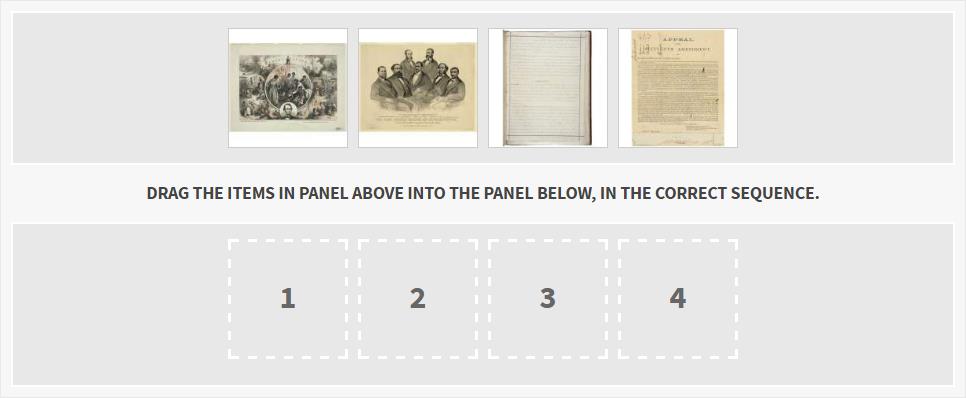Reconstruction and the Constitution
Finding a Sequence

About this Activity
- Created by:Andrew Zetts
- Historical Era:Civil War and Reconstruction (1850-1877)
- Thinking Skill:Chronological Thinking
- Bloom's Taxonomy:Analyzing
- Grade Level:High School
In this activity, students will arrange the documents in chronological order. Each document is related to a constitutional amendment that emerged during Reconstruction and expanded civil rights. Students should arrange the documents in the same order as the amendments were passed (or proposed in the case of the 16th Amendment).
While this activity reviews the sequence of the Reconstruction Amendments and the ongoing expansion of civil rights, it also helps students realize that Reconstruction, in its entirety, was about reconceptualizing American citizenship. Thus, other groups saw this era as an opportunity to push for an expansion of their rights. After sequencing the documents, the activity asks students to engage with this understanding by contextualizing the "Appeal for a Sixteenth Amendment" by nineteenth-century women's rights activists.
https://www.docsteach.org/activities/student/reconstruction-and-the-constitutionWhile this activity reviews the sequence of the Reconstruction Amendments and the ongoing expansion of civil rights, it also helps students realize that Reconstruction, in its entirety, was about reconceptualizing American citizenship. Thus, other groups saw this era as an opportunity to push for an expansion of their rights. After sequencing the documents, the activity asks students to engage with this understanding by contextualizing the "Appeal for a Sixteenth Amendment" by nineteenth-century women's rights activists.




